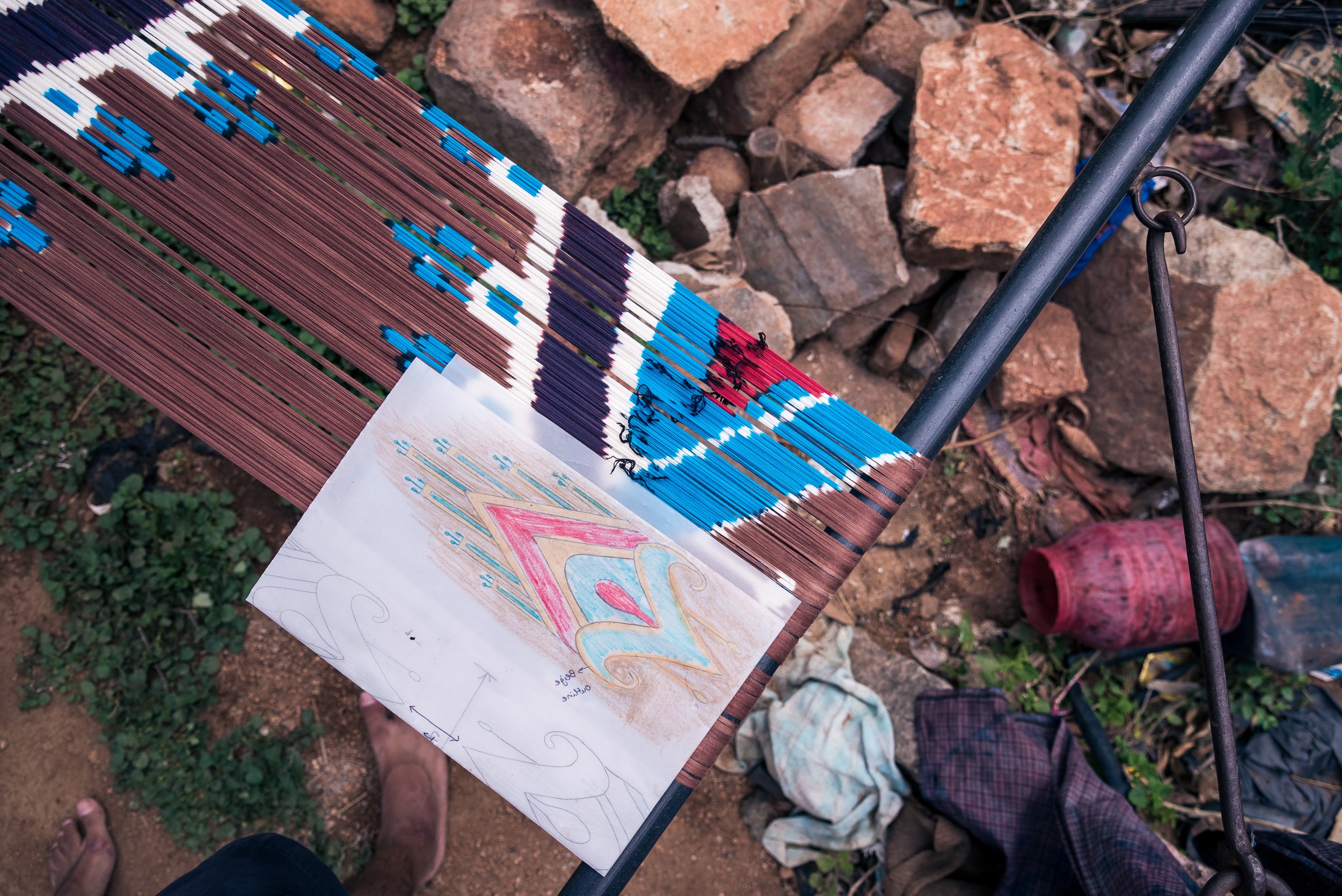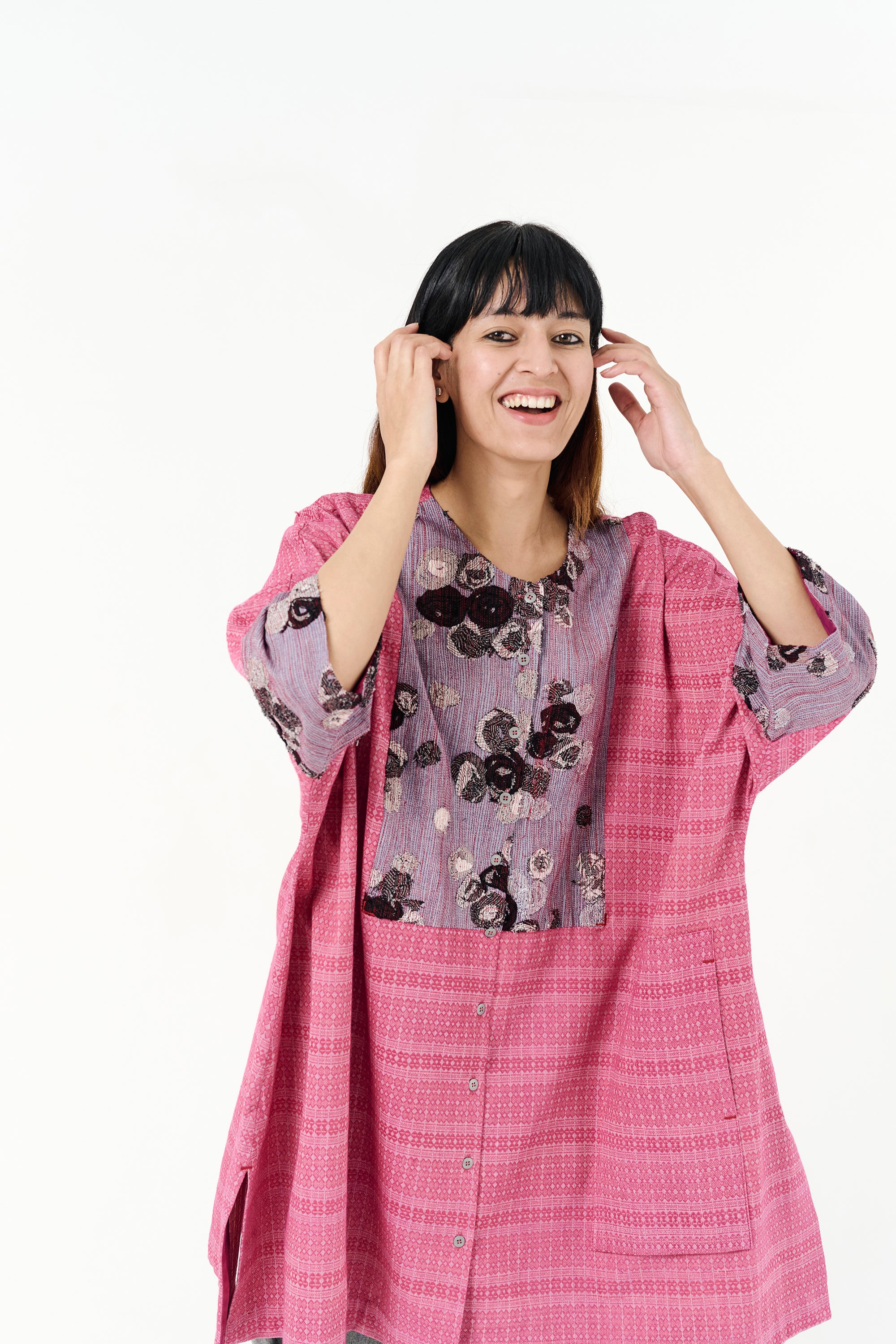One of the world's most beautiful and Intricate textiles, Ikat weaving is a unique process. The interplay of resist-dyed yarns brings to life - signature hazy patterns inspired by nature and the surroundings of the maker. This magnificent art of developing Ikats brings together masterful artisans, dyers, and weavers involved in every step of the process. This extremely complex process of Ikat weaving begins with facilitating the patterns on the yarns by setting them on a frame, binding them to resist-dye, and opening the resists once dyed. This process is repeated many times until the required shades are achieved which are further woven to create distinctive patterns. The Ikat dying process is a long and complicated one; it can take months together to complete.
The glorious craft of Ikat weaving has sustained itself through generations by emphasizing a quality of luxury and timelessness. The craft has been handed down from generation to generation by revitalizing itself with the help of various innovations in technicalities to keep up with the changing times and demands. Presently, the craft provides a living to more than 10,000 weaving families including generational artisans, dyers, and daily wage workers.
 From the stance of the current global fashion crisis, the industrial economy has been embracing consumption driven by low costs achieved through large-scale production. This has enabled consumers to turn a blind eye toward the consequences of the ravaging growth in Innovations that disrupt the crafts sector. One such Innovation is the faux digital prints of the Ikat textile. These digitally printed replicas look similar to the original ones and are quite deceiving. The production of such faux Ikat fabrics might eventually push the original craft to extinction due to its easy production and cheap pricing. The consumption of replicated fabrics disrupts the ecosystem of the communities involved in each of the processes, affecting their livelihood, and declining their skills, economic opportunities, and outcomes.
From the stance of the current global fashion crisis, the industrial economy has been embracing consumption driven by low costs achieved through large-scale production. This has enabled consumers to turn a blind eye toward the consequences of the ravaging growth in Innovations that disrupt the crafts sector. One such Innovation is the faux digital prints of the Ikat textile. These digitally printed replicas look similar to the original ones and are quite deceiving. The production of such faux Ikat fabrics might eventually push the original craft to extinction due to its easy production and cheap pricing. The consumption of replicated fabrics disrupts the ecosystem of the communities involved in each of the processes, affecting their livelihood, and declining their skills, economic opportunities, and outcomes.

While we have witnessed several heritage crafts fade over time, we need to act and ensure the sustenance of our age-old craft practice by being conscious makers and consumers. As responsible consumers, we have to be aware of where our clothing comes from and who made them. One simple technique to identify the faux prints of Ikats from the originals is to understand the key feature of Ikats - they look exactly similar on both sides (right side and wrong side). If you notice a slight variation in colour or pattern on the backside of the fabric, it is certain that the Ikat fabric is not original.
At translate, we are dedicated to setting a path to revitalize and nourish the legacy of Ikat craft by empowering and providing consistent employment to our generational artisans. Let us all make a commitment to be conscious consumers by educating ourselves about the economic and environmental impacts of our choices, spreading awareness, and shopping at ethical places.



 From the stance of the current global fashion crisis, the industrial economy has been embracing consumption driven by low costs achieved through large-scale production. This has enabled consumers to turn a blind eye toward the consequences of the ravaging growth in Innovations that disrupt the crafts sector. One such Innovation is the faux digital prints of the Ikat textile. These digitally printed replicas look similar to the original ones and are quite deceiving. The production of such faux Ikat fabrics might eventually push the original craft to extinction due to its easy production and cheap pricing. The consumption of replicated fabrics disrupts the ecosystem of the communities involved in each of the processes, affecting their livelihood, and declining their skills, economic opportunities, and outcomes.
From the stance of the current global fashion crisis, the industrial economy has been embracing consumption driven by low costs achieved through large-scale production. This has enabled consumers to turn a blind eye toward the consequences of the ravaging growth in Innovations that disrupt the crafts sector. One such Innovation is the faux digital prints of the Ikat textile. These digitally printed replicas look similar to the original ones and are quite deceiving. The production of such faux Ikat fabrics might eventually push the original craft to extinction due to its easy production and cheap pricing. The consumption of replicated fabrics disrupts the ecosystem of the communities involved in each of the processes, affecting their livelihood, and declining their skills, economic opportunities, and outcomes.

















